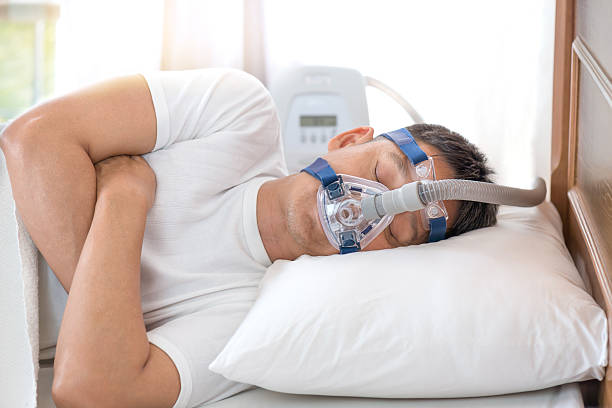Article Details
Knowledge is Power!


Unmasking UARS: Understanding Upper Airway Resistance Syndrome
In today’s fast-paced world, many individuals struggle with sleep disorders, often unaware of the underlying causes affecting their quality of rest. One such condition that remains relatively under-recognized is Upper Airway Resistance Syndrome (UARS). As a leading dental clinic in Seminole, Florida, dedicated to enhancing overall wellness, E Dental aims to shed light on this often overlooked yet impactful disorder.
What is Upper Airway Resistance Syndrome (UARS)?
Upper Airway Resistance Syndrome (UARS) is a sleep disorder characterized by a partial obstruction of the upper airway, leading to increased breathing effort during sleep. Unlike obstructive sleep apnea syndrome (OSAS), UARS presents unique challenges due to its subtle nature, making it challenging to diagnose without a comprehensive understanding of its symptoms and contributing factors.
What Causes Upper Airway Resistance Syndrome?
The causes of Upper Airway Resistance Syndrome (UARS) are rooted in the intricate dynamics of the upper respiratory system, involving various anatomical and physiological factors that contribute to the manifestation of this sleep disorder.
Anatomical Predispositions
The primary cause of UARS lies in the relaxation or collapse of soft tissues in the throat during sleep. This can result from anatomical predispositions, such as naturally narrowed air passages, which increase the susceptibility to airway obstruction. When the upper airway becomes narrowed due to the collapse of fatty tissues or the tongue falls to the back of the throat, it leads to restricted airflow and elevated respiratory effort.
Physiological Factors
In addition to anatomical considerations, UARS may also be influenced by physiological factors. Loose or relaxed fatty tissue in the throat collapsing backward partially blocks the airway, leading to increased breathing effort during sleep.
Furthermore, other clinical features associated with UARS, such as cold extremities, postural hypotension, a history of fainting, and low blood pressure, highlight the complex interplay of physiological responses contributing to this distinct syndrome.
Sleep Breathing Disorder
Individuals with UARS often exhibit symptoms of abnormal respiratory effort and nasal airflow limitation during sleep. These manifestations are indicative of the underlying challenges in maintaining unobstructed breathing, distinguishing UARS from obstructive sleep apnea syndrome (OSAS) while underscoring the significance of addressing the unique characteristics of this sleep disorder.
Unveiling the Symptoms of Upper Airway Resistance Syndrome
Recognizing the symptoms of UARS is crucial for prompt diagnosis and effective management. Patients with UARS often exhibit signs such as excessive daytime sleepiness, chronic fatigue, morning headaches, restless sleep patterns, and difficulty concentrating during the day. Furthermore, individuals with UARS may also experience frequent night awakenings due to the compromised quality of sleep, impacting their overall well-being and cognitive function.
UARS Diagnosis: How Can You Know?
Diagnosing Upper Airway Resistance Syndrome (UARS) typically involves a comprehensive assessment encompassing medical history, symptoms evaluation, and diagnostic testing. Here are the key components involved in the diagnosis of UARS:
Medical History and Symptoms Evaluation
Healthcare professionals conduct a thorough review of the patient’s medical history, paying close attention to symptoms associated with sleep-disordered breathing. Individuals may report experiencing symptoms such as excessive daytime sleepiness, unrefreshing sleep, frequent awakenings, and non-restorative sleep despite spending adequate hours in bed. Additionally, complaints of chronic fatigue, morning headaches, and cognitive impairment may prompt further investigation for UARS.
Sleep Study (Polysomnography)
Polysomnography is a fundamental diagnostic tool utilized to assess respiratory parameters and sleep architecture. Unlike conventional obstructive sleep apnea, UARS often presents with subtle respiratory disturbances that may not manifest as overt apneas or hypopneas.
Therefore, specialized measurements, such as esophageal pressure monitoring and the analysis of flow limitations, play a crucial role in identifying increased respiratory effort and elevated airway resistance characteristic of UARS.
Upper Airway Imaging
Imaging studies, such as cephalometric X-rays or nasoendoscopy, may be employed to examine the anatomical structure of the upper airway. These assessments help identify potential obstructions or anatomical variations contributing to airway resistance and aid in tailoring individualized treatment strategies.
Diagnostic Questionnaires
Healthcare providers may utilize standardized questionnaires, such as the Epworth Sleepiness Scale and the Pittsburgh Sleep Quality Index, to gauge the severity of daytime sleepiness and the overall impact of sleep disturbances on an individual’s quality of life. These tools assist in elucidating the broader spectrum of symptoms and their implications for diagnosing UARS.
Multi-Disciplinary Collaboration
Given the nuanced nature of UARS, collaboration between sleep medicine specialists, otolaryngologists, and dental sleep professionals is often instrumental in arriving at an accurate diagnosis and formulating a comprehensive management plan. This collaborative approach ensures a holistic evaluation of the patient’s condition, taking into account both physiological and anatomical considerations.
Delving Deeper into Upper Airway Resistance Syndrome Treatment
As part of our commitment to holistic well-being, E Dental emphasizes tailored approaches to address UARS and its associated challenges. Treatment for UARS often involves a multidisciplinary approach, encompassing dental interventions, lifestyle modifications, and collaboration with sleep specialists. Here’s what you can expect from treatment:
Behavior and Lifestyle Treatments
Behavioral and lifestyle modifications play a pivotal role in managing Upper Airway Resistance Syndrome. Implementing strategies such as maintaining a healthy weight, avoiding alcohol and sedatives before bed, and sleeping on one’s side can significantly alleviate airway resistance.
Additionally, practicing good sleep hygiene and establishing a consistent sleep schedule can contribute to improved sleep quality for individuals with UARS.
Oral Appliances
Oral appliances, also known as mandibular advancement devices, are a popular non-invasive treatment option for UARS. These custom-fitted devices are designed to reposition the lower jaw and tongue to prevent airway collapse during sleep, thereby reducing upper airway resistance and enhancing airflow.
At E Dental, our experienced professionals specialize in crafting personalized oral appliances tailored to each patient’s unique anatomical considerations, ensuring optimal comfort and efficacy.
Surgery
In cases where conservative treatments prove insufficient, surgical intervention may be considered to address anatomical or structural abnormalities contributing to UARS. Surgical options such as uvulopalatopharyngoplasty (UPPP) or maxillomandibular advancement (MMA) aim to widen the airway and reduce tissue obstruction. Our team at E Dental collaborates closely with renowned sleep medicine and otolaryngology specialists to provide comprehensive evaluations and recommendations for suitable surgical interventions when warranted.
E Dental Services: A Journey to Restored Well-Being
At E Dental, we are committed to delivering comprehensive care for individuals experiencing Upper Airway Resistance Syndrome. Our multidisciplinary approach encompasses advanced diagnostic assessments, personalized treatment plans, and ongoing support to optimize therapeutic outcomes.
Whether through custom oral appliances, coordinated surgical consultations, or lifestyle counseling, our dedicated team endeavors to empower patients to achieve restful, rejuvenating sleep and a renewed sense of well-being.
Through our integrated services, we strive to elevate awareness of UARS management and foster proactive engagement with individuals seeking effective solutions. By leveraging cutting-edge technology and a patient-centered ethos, E Dental stands as a trusted partner in the journey toward enhanced sleep quality and overall health.
To explore how E Dental can assist in addressing Upper Airway Resistance Syndrome and related sleep disorders like apnea and snoring, we welcome you to schedule a consultation with our knowledgeable team to embark on a tailored path toward holistic wellness.
Complete the form below and one of our staff will contact you to confirm




